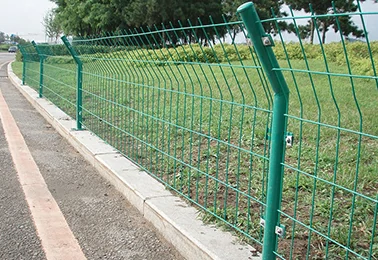 TEL:
+86-13102802206
TEL:
+86-13102802206
 Email:
fencenetting@china.com
Email:
fencenetting@china.com
 Language
Language
 TEL:
+86-13102802206
TEL:
+86-13102802206
 Email:
fencenetting@china.com
Email:
fencenetting@china.com
 Language
Language


The Benefits of Green Gabion Walls in Modern Landscaping
In the realm of modern landscaping and sustainable architecture, innovative designs are becoming increasingly popular. One such design that captures both functionality and aesthetic appeal is the green gabion wall. Combining natural materials with environmental consciousness, green gabion walls are not only visually appealing but also offer a multitude of benefits.
What is a Gabion Wall?
Gabion walls are structures made of wire cages (gabions) filled with stone or other materials. Originally used in military fortifications, these structures have found new applications in landscaping and civil engineering. A green gabion wall incorporates vegetation, such as climbing plants or grasses, into the design, creating a living wall that fosters biodiversity and enhances the environment.
Environmental Benefits
One of the most significant advantages of green gabion walls is their positive impact on the environment. The natural stones used can promote drainage, mitigating issues of erosion and runoff. As rainwater passes through the stones, it is naturally filtered, reducing pollution and improving groundwater quality. Moreover, the plants integrated into the wall not only beautify the space but also contribute to air purification and carbon sequestration.
The addition of vegetation creates habitats for various species, promoting biodiversity in urban areas. Birds, insects, and small mammals are attracted to the greenery, creating an ecosystem that thrives within a structured setting. This interaction encourages the growth of healthy flora and fauna, which can be especially critical in highly urbanized environments lacking natural habitats.
Aesthetic Appeal
Green gabion walls are visually striking and versatile, making them an excellent choice for various landscaping projects. The natural stones can blend seamlessly with the surrounding landscape, while the climbing plants add a lush, vibrant touch. Whether used as a privacy screen, a property boundary, or a decorative feature in a garden, these walls can be customized to suit any aesthetic preference.

The texture and color variations of the stones can be selected to complement existing architectural features, while the choice of plants allows for seasonal changes in appearance. This adaptability ensures that the green gabion wall remains a beautiful focal point throughout the year.
Structural Integrity
Beyond aesthetic and environmental advantages, green gabion walls are known for their structural integrity and longevity. The use of strong wire cages filled with durable stones creates a robust barrier that can withstand the test of time and extreme weather conditions. Unlike traditional walls, which may crack or erode, gabion walls can flex and settle without significant damage.
Moreover, these walls are relatively low-maintenance. The natural materials used in their construction can withstand the elements, and the plants require minimal care once established. This makes green gabion walls an ideal choice for those looking to create an attractive landscape without the burden of constant upkeep.
Cost-Effectiveness
Constructing a green gabion wall can be more cost-effective than traditional masonry walls. The materials used—such as local stones—can often be sourced at a lower cost, and the ease of installation reduces labor expenses. Additionally, the environmental benefits can lead to long-term savings by mitigating erosion and runoff damage to surrounding areas.
Conclusion
In summary, green gabion walls are an innovative solution for enhancing modern landscapes. They provide a sustainable approach to construction that marries aesthetics with functionality. Their environmental benefits, structural integrity, and cost-effectiveness make them an attractive option for both homeowners and landscape architects. As society increasingly recognizes the importance of sustainable living, green gabion walls stand out as a testament to the harmonious coexistence of nature and modern design. Whether in urban settings or rural landscapes, these walls represent a significant step towards a greener future, all while adding beauty and value to the environment.